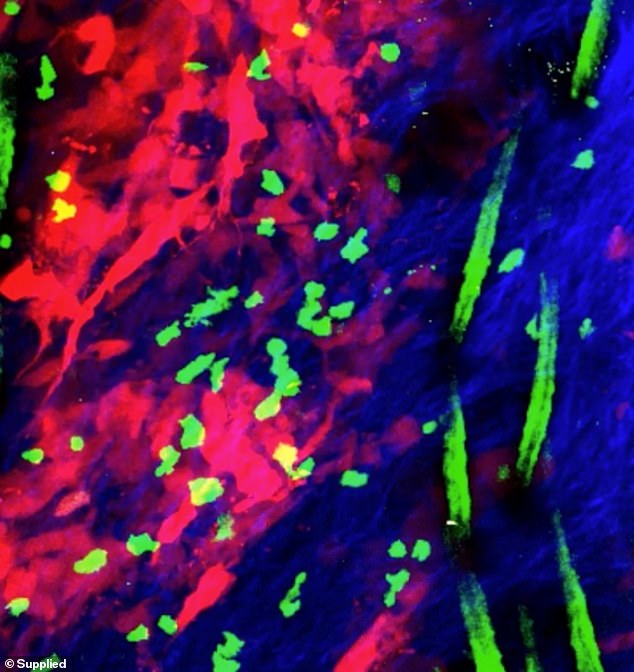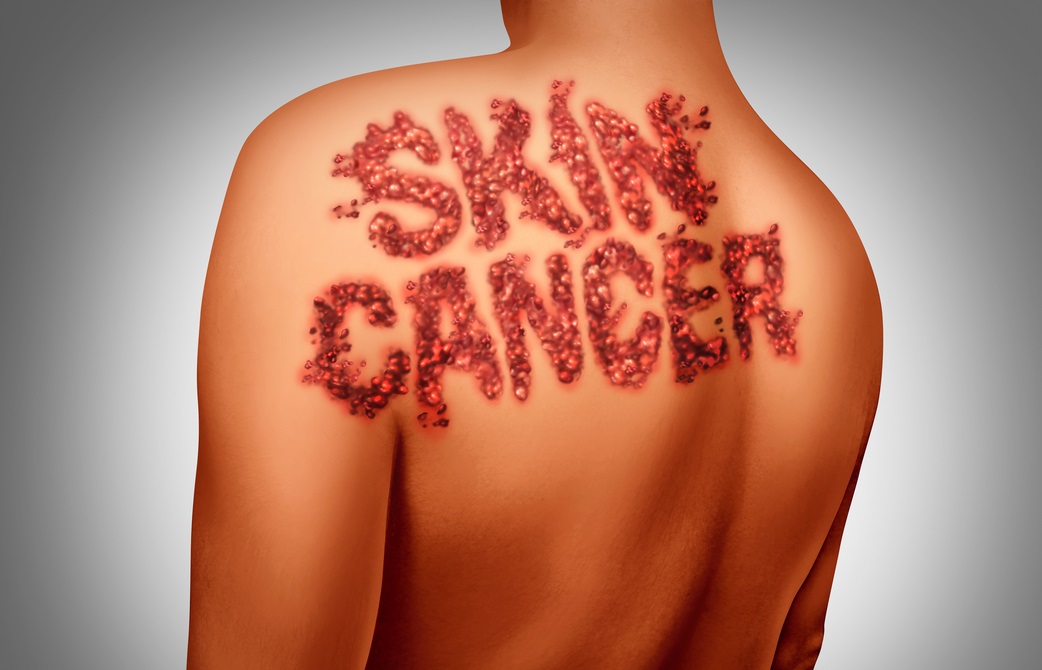- Scientists have made a breakthrough discovery regarding the treatment of cancer
- Research has uncovered special immune cells which put melanomas to sleep
- Experts did not know how the tissue-resident memory T-cells worked until now
Scientists have made a breakthrough discovery that could open up revolutionary treatments for skin cancer.
Research has uncovered that special immune cells have the power to put melanoma tumours ‘to sleep’, stopping them from spreading.
The tissue-resident memory T-cells have been used to fight cancer in the past but researchers did not know how they worked – until now.

Research carried out by scientists at Melbourne’s Peter Dohety Institute and Telethon Kids Institute was published in Nature journal on Tuesday.
They discovered that the T-cells could be used to stop the growth of skin cancers.
Paper lead author Simone Park said the T-cells ‘hold cancer in check’.
‘What we found was that the cells are capable of inducing a state of dormancy of a tumour, stopping the cancer cells without killing them,’ Ms Park told Daily Mail Australia.
‘These particular cells are very good at controlling melanoma long term.’
She said scientists monitored both melanoma and T-cells using fluorescent markers.
‘We could watch in real time the T cells interacting with melanoma cells,’ she said.
T-cells were removed from mice which had dormant melanomas, and once the cells were taken out then tumours then began to grow.
‘We could identify melanoma cells that can’t be seen with the naked eye,’ Ms Park said.
‘This mechanism hadn’t been described before.’
Ms Park said she hoped the research breakthrough could lead to more improved treatments for melanoma.
‘In the future, the broader effect could be how to better treat melanoma… and hopefully treat people much better than we are now,’ she said.
In Australia, there are 14,000 new diagnoses of melanoma each year – and almost 2000 deaths from skin cancer.
The nation has the second highest rate of melanoma in the world.
Facts and Figures
- There are 14,000 new diagnoses of melanoma in Australia annually
- Almost 2000 individuals die from skin cancer nationally each year
- The five-year survival rate is between 90 to 99 per cent if melanoma is detected early
- The rate drops to less than 50 per cent if not detected early
What Is Melanoma and How Can You Prevent It?
Melanoma is the most dangerous form of skin cancer. It happens after the DNA in skin cells is damaged (typically due to harmful UV rays) and then not repaired so it triggers mutations that can form malignant tumours.
The estimated number of diagnosis for skin cancer in Australia in 2018 is 14,320 which grew from the previous year where there were 13,941 cases and 1,839 deaths.
Approximately two in three Australians will be diagnosed with skin cancer by the time they are 70.
Causes
Sun exposure: UV and UVB rays from the sun and tanning beds are harmful to the skin
Moles: The more moles you have, the greater the risk of getting melanoma
Skin type: Fairer skin has a higher risk of getting melanoma
Hair colour: Redheads are more at risk than others
Personal history: If you’ve had melanoma once, then you are more likely to get it again
Family history: If previous relatives have been diagnosed, then that increases your risk
Treatment
Removal of the melanoma:
This can be done by removing the entire section of a tumour or by the surgeon removing the skin layer by layer. When a surgeon removes it layer by layer, this helps them figure out exactly where cancer stops so they don’t have to remove more skin than is necessary.
Skin grafting:
The patient can decide to use a skin graft if the surgery has left behind discolouration or an indent.
Immunotherapy, radiation treatment or chemotherapy:
This is needed if cancer reaches stage III or IV. That means that the cancerous cells have spread to the lymph nodes or other organs in the body.
Prevention
Use sunscreen and do not burn
Avoid tanning outside and in beds
Apply sunscreen 30 minutes before going outside
Keep newborns out of the sun
Examine your skin every month
See your physician every year for a skin exam
Sources:
Skin Cancer Foundation and Cancer Council Australia
Dailymail
 Based on +200
reviews
Based on +200
reviews



